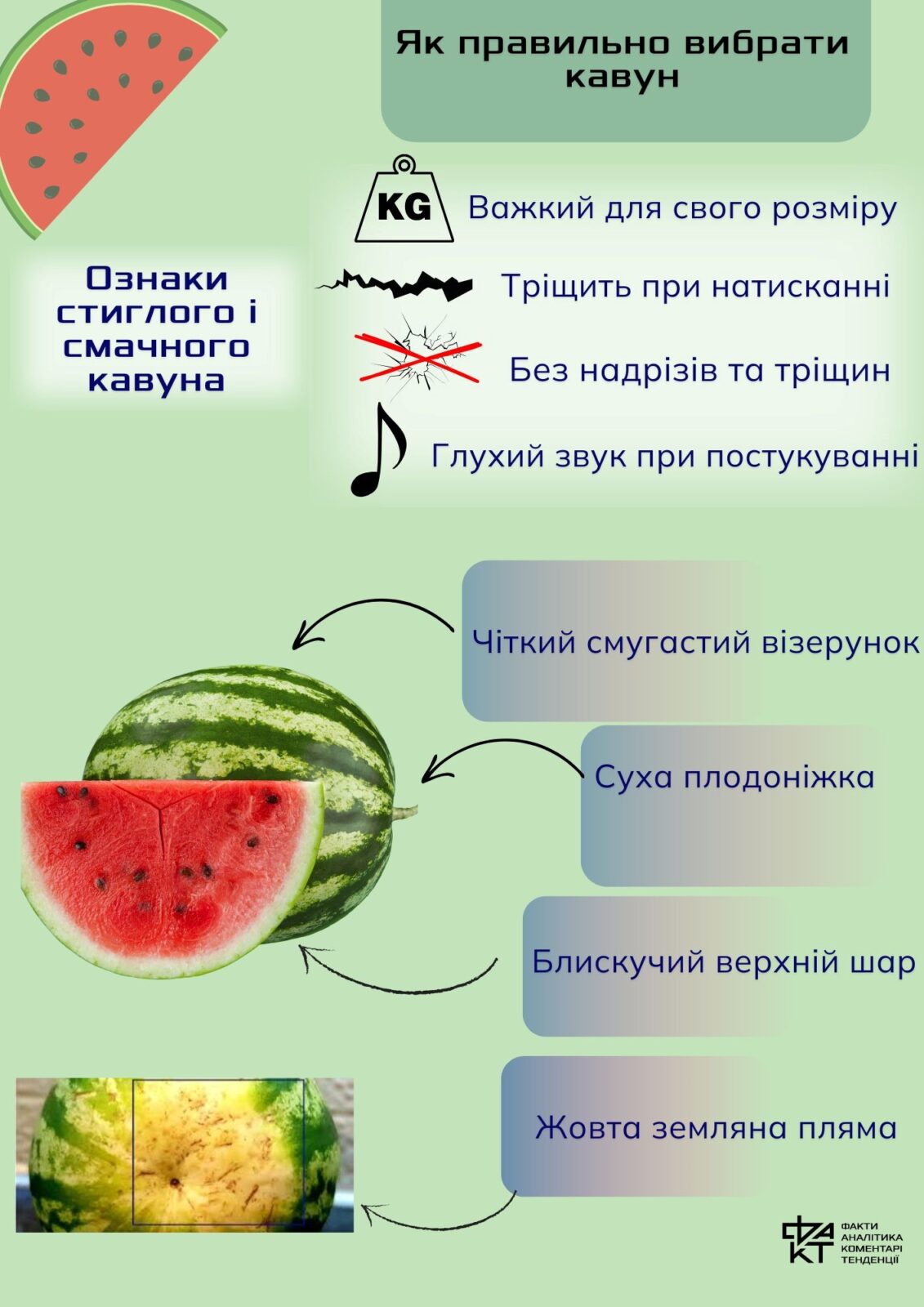How to “switch to watermelons” correctly (infographic)

Summer is in full swing. The heat is annoying, because it is not always possible to hide under the air conditioner in the absence of electricity. So it’s time to “switch to watermelons”. They both quench thirst and satisfy hunger, if the choice is made correctly. For convenience, we offer you the infographic “How to choose a watermelon correctly”. To taste a ripe fruit, you should pay attention to several important signs.

- Color and shape
A ripe watermelon has a rich, bright green color with dark stripes. Avoid watermelons that are pale or uneven in color.
Choose watermelons of the correct shape – round or oval, without deformations and dents.
- Spot on the side (ground spot)
A ripe watermelon has a yellow or cream spot on the side that was formed from contact with the ground. The darker and more saturated the spot, the longer the watermelon ripened in the field.
- Sound when tapping
Pick up the watermelon and tap it lightly. A ripe watermelon makes a dull, loud sound. An unripe watermelon will sound duller and quieter.
- Weight and size
A ripe watermelon should be heavy for its size. If the watermelon seems light, it may mean that it is not yet ripe.
Choose medium-sized watermelons. Watermelons that are too large or too small may be unripe or overripe.
– Skin and tail
The skin of the watermelon should be firm and smooth. If it is easily pressed with a fingernail, the watermelon may be unripe.
A dry and brown tail indicates that the watermelon is ripe. If the tail is green, the watermelon is probably not yet ripe.
When choosing a watermelon, follow these tips and you will be able to enjoy a delicious and sweet fruit.





